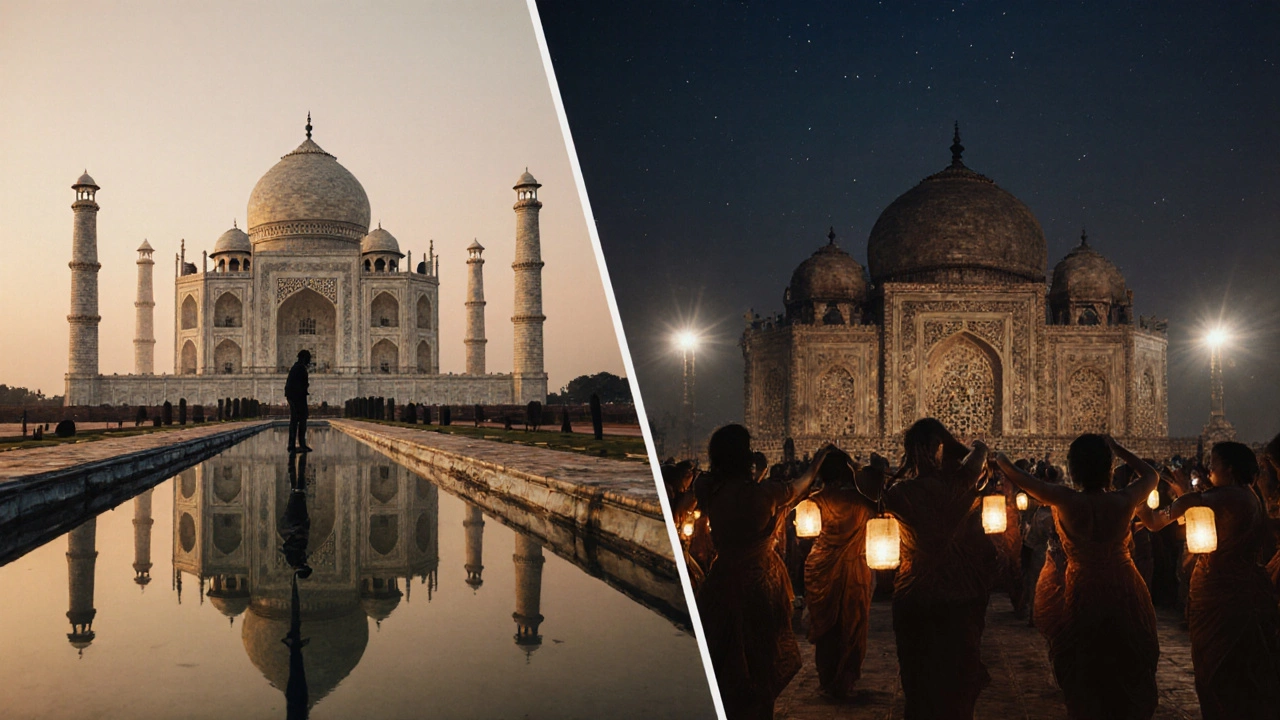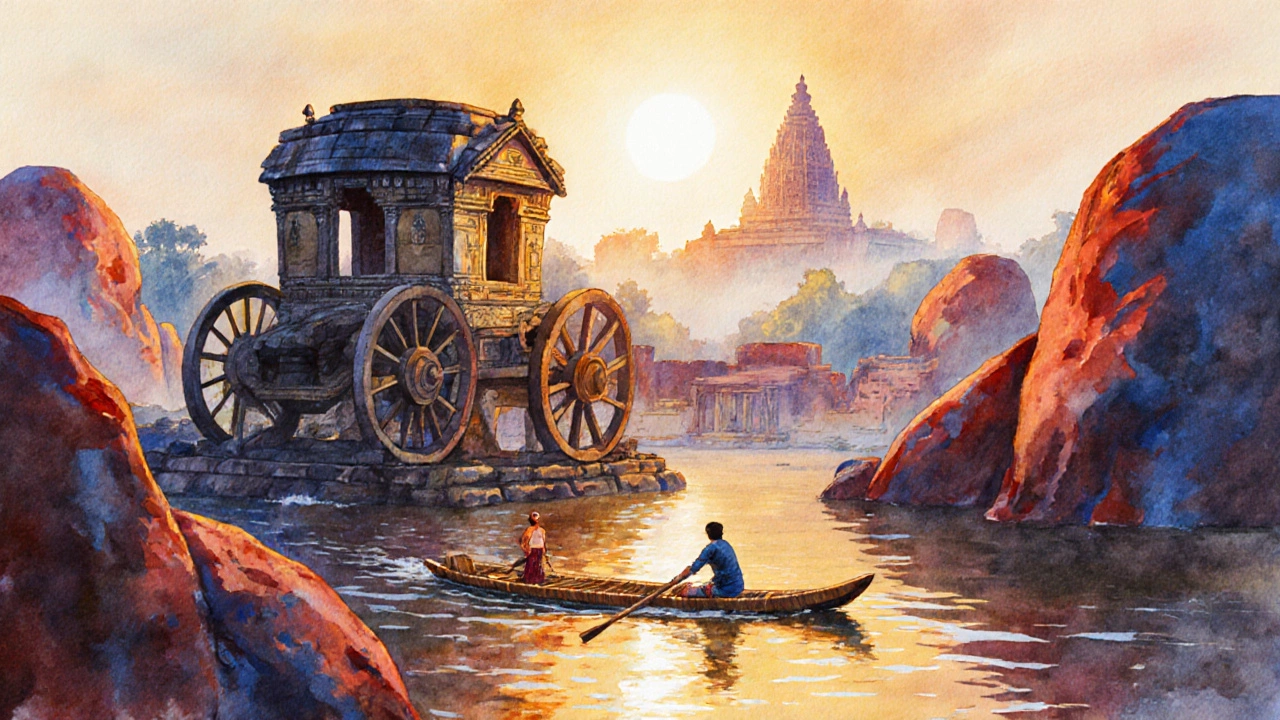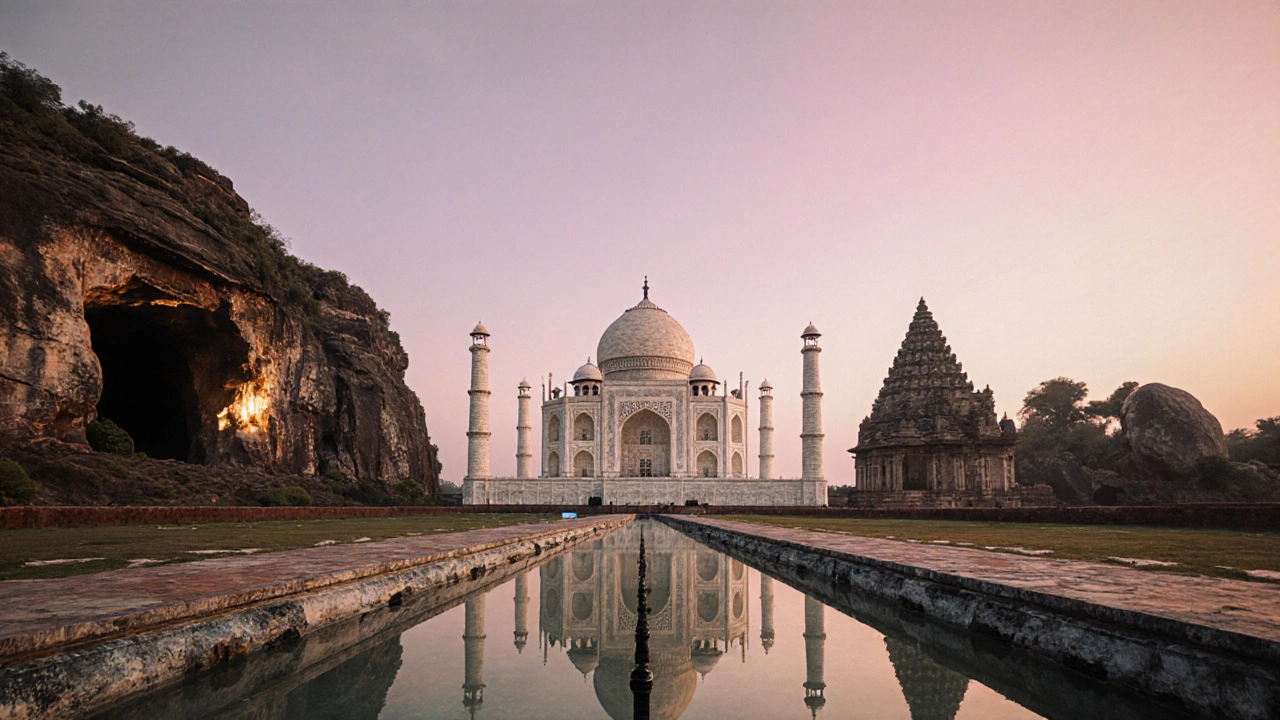Heritage Site Selector
Find Your Perfect Heritage Destination
Answer 4 quick questions to discover which Indian heritage site matches your travel style. Based on UNESCO criteria and article insights.
When it comes to heritage sites India, the competition is fierce. From marble mausoleums to rock‑cut cave temples, the subcontinent packs more UNESCO‑listed wonders than any other country. This guide breaks down the top heritage destinations, explains what makes each one special, and helps you decide which site deserves the prime spot on your travel bucket list.
What Defines a World‑Class Heritage Site?
Before ranking, it helps to know the criteria that experts use. UNESCO looks for three core values:
- Outstanding universal value - does the site illustrate a masterpiece of human creative genius or an important cultural tradition?
- Integrity and authenticity - is the site intact enough to convey its significance, and does it retain its original material?
- Protection and management - are there robust legal and conservation frameworks in place?
Travelers often add personal factors: accessibility, visitor experience, and how well the site tells its story.
Top Heritage Sites in India for 2025
The following list combines UNESCO status, visitor ratings, and on‑the‑ground practicality. Each entry includes a short microdata definition that can be picked up by knowledge‑graph crawlers.
| Site | State | UNESCO Inscription Year | Key Feature | Best Visiting Season |
|---|---|---|---|---|
| Taj Mahal | Uttar Pradesh | 1983 | Marble mausoleum, Mughal love story | Oct‑Mar |
| Ajanta Caves | Maharashtra | 1983 | Rock‑cut Buddhist murals | Nov‑Feb |
| Khajuraho Group of Monuments | Madhya Pradesh | 1986 | Erotic temple sculpture | Oct‑Mar |
| Hampi | Karnataka | 1986 | Vijayanagara ruins, boulder landscapes | Oct‑Feb |
| Mahabalipuram | Tamil Nadu | 1984 | Shore Temple, bas-relief rock carvings | Oct‑Mar |
| Rani ki Vav | Gujarat | 2014 | Step‑well with intricate sculptures | Oct‑Mar |
| Jantar Mantar, Jaipur | Rajasthan | 2010 | Ancient astronomical instruments | Oct‑Mar |
| Chhatrapati Shivaji Terminus | Maharashtra | 2004 | Victorian‑Gothic railway station | Oct‑Mar |
North India Gems
Taj Mahal is a white marble mausoleum in Agra built by Emperor Shah Jahan for his wife Mumtaz Mahal, often called a monument of eternal love. Its perfect symmetry, reflective pools, and changing hues at sunrise make it the most photographed site in the country. Arrive early (before 6 am) to beat the crowds and capture the pink glow.
Further east, the Khajuraho Group of Monuments comprises a cluster of Hindu and Jain temples known for their elaborate erotic sculptures. Set in the Bundelkhand region, these temples balance spiritual symbolism with bold artistry. The best time to visit is during the Khajuraho Dance Festival (Feb‑Mar), when night‑time lighting accentuates the carvings.

Western Highlights
The desert state of Gujarat boasts the Rani ki Vav a step‑well in Patan featuring more than 500 sculpted panels depicting deities, celestial beings, and everyday life. Built in the 11th century, it showcases the Solanki dynasty’s engineering brilliance. Explore the well after a monsoon shower for dramatic reflections.
In Maharashtra, the Chhatrapati Shivaji Terminus formerly Victoria Terminus, is a UNESCO‑listed railway station famed for its blend of Victorian Gothic and Indian architectural motifs. A quick train ride from Mumbai, it’s a living heritage site where commuters and tourists converge. Guided tours run twice daily, revealing hidden frescoes and ironwork details.
South India Marvels
Way down south, the Mahabalipuram also known as Mamallapuram, houses the Shore Temple and the famous rock‑cut Group of Monuments, dating back to the Pallava dynasty. The sea‑battered shoreline amplifies the tranquil vibe, especially during the early morning light.
Just inland, the Hampi is a sprawling ruin of the Vijayanagara Empire, characterized by massive boulder formations, temple complexes, and the iconic stone chariot of the Vittala Temple. Its surreal landscape feels otherworldly; renting a bicycle or a bamboo raft gives you a unique perspective.

Choosing the Best Heritage Site for Your Trip
Now that you know the standouts, here’s a quick decision matrix:
- Time constraints: If you have only one day, Taj Mahal or Rani ki Vav provide a complete experience in a few hours.
- Interest focus: Art lovers gravitate to Ajanta’s murals; astronomy buffs should not miss Jantar Mantar.
- Travel budget: Some sites (like Hampi) are best accessed by bus and budget stays, while others (like the Taj) may require mid‑range accommodation.
- Seasonal comfort: Avoid the monsoon in the Himalayas; opt for the dry cooler months (Oct‑Mar) for most locations.
Insider Tips for an Unforgettable Visit
- Buy tickets online where possible. Taj Mahal, Ajanta, and Hampi all have e‑ticket portals that skip the long queues.
- Hire a local guide at sites with complex histories; a guide can decode iconography at Khajuraho within minutes.
- Dress modestly at religious sites. Carry a scarf for temples that require head covering.
- Stay nearby to capture sunrise or sunset shots. The best light at the Taj is early morning; at Mahabalipuram it’s during the golden hour over the sea.
- Respect preservation rules: No flash photography at Ajanta, no climbing on the stone chariot at Hampi.
Essential Pre‑Travel Checklist
- Verify UNESCO inscription dates - helps prioritize authenticity.
- Check local holiday calendars - some sites close on regional festivals.
- Pack a reusable water bottle and sun protection - most locations are outdoors.
- Download offline maps - cell service can be spotty in remote heritage zones.
- Confirm entry fee reductions for students or senior citizens.
Which heritage site is best for a short weekend trip?
For a quick getaway, Rani ki Vav in Patan or the Taj Mahal in Agra work best. Both are reachable by a half‑day train ride from major cities, and you can explore the core attractions within 3‑4 hours.
Do I need a visa to visit Indian heritage sites?
Yes, all foreign travellers need a valid Indian visa unless they are from visa‑exempt countries. The e‑visa process is straightforward and valid for tourism, including heritage tours.
Are there any heritage sites that are wheelchair accessible?
Chhatrapati Shivaji Terminus and the Taj Mahal have designated ramps and wheelchair‑friendly routes. However, many ancient sites like Ajanta Caves have uneven steps, so plan accordingly.
What’s the best time of year to avoid crowds?
Visit between late October and early March. This period is outside the peak tourist season and aligns with cooler weather across most of India.
Can I combine heritage tours with wildlife safaris?
Absolutely. Pair a trip to Hampi with a nearby visit to the Nagarhole National Park, or combine a tour of Jaipur’s Jantar Mantar with a safari in Ranthambore.
Whether you’re chasing romance at the Taj, studying ancient murals at Ajanta, or hunting sunrise over the boulders of Hampi, India’s heritage sites deliver unforgettable stories. Choose the one that aligns with your interests, time, and budget, and you’ll walk away with a deeper connection to the country’s rich past.
